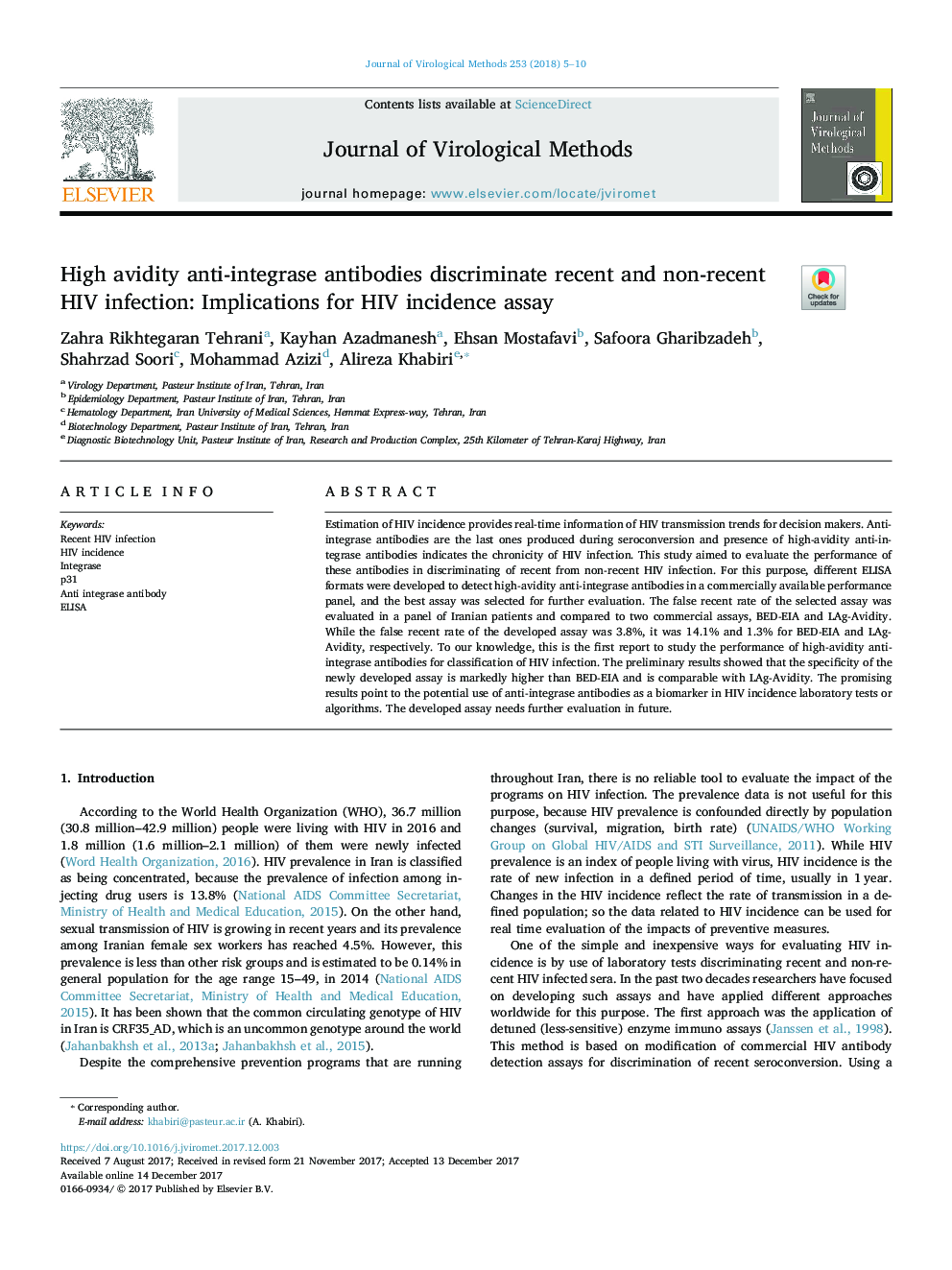| Article ID | Journal | Published Year | Pages | File Type |
|---|---|---|---|---|
| 8747119 | Journal of Virological Methods | 2018 | 6 Pages |
Abstract
Estimation of HIV incidence provides real-time information of HIV transmission trends for decision makers. Anti-integrase antibodies are the last ones produced during seroconversion and presence of high-avidity anti-integrase antibodies indicates the chronicity of HIV infection. This study aimed to evaluate the performance of these antibodies in discriminating of recent from non-recent HIV infection. For this purpose, different ELISA formats were developed to detect high-avidity anti-integrase antibodies in a commercially available performance panel, and the best assay was selected for further evaluation. The false recent rate of the selected assay was evaluated in a panel of Iranian patients and compared to two commercial assays, BED-EIA and LAg-Avidity. While the false recent rate of the developed assay was 3.8%, it was 14.1% and 1.3% for BED-EIA and LAg-Avidity, respectively. To our knowledge, this is the first report to study the performance of high-avidity anti-integrase antibodies for classification of HIV infection. The preliminary results showed that the specificity of the newly developed assay is markedly higher than BED-EIA and is comparable with LAg-Avidity. The promising results point to the potential use of anti-integrase antibodies as a biomarker in HIV incidence laboratory tests or algorithms. The developed assay needs further evaluation in future.
Keywords
Related Topics
Life Sciences
Immunology and Microbiology
Virology
Authors
Zahra Rikhtegaran Tehrani, Kayhan Azadmanesh, Ehsan Mostafavi, Safoora Gharibzadeh, Shahrzad Soori, Mohammad Azizi, Alireza Khabiri,
